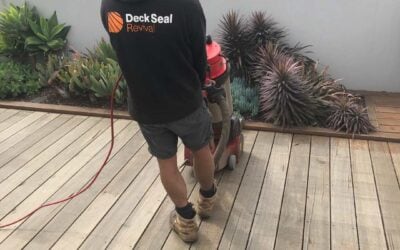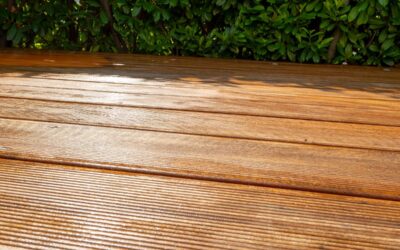We’ve taken some of the most searched-for questions on Google about deck maintenance and staining to help you get the best results for your outdoor space. If you’ve ever wondered how to properly stain your deck, avoid common mistakes, or what happens if the weather doesn’t co-operate, you’re in the right place. Let’s dive in!
1. What NOT to Do When Staining a Deck?
Staining your deck isn’t just a slap-it-on-and-go job—it requires preparation and technique to ensure long-lasting results. Here are the biggest mistakes to avoid:
● Skipping the Prep Work: Staining over dirt, mildew, or an old, failing stain will prevent proper adhesion and result in peeling or patchy coverage. Always clean and prepare your deck properly.
● Applying Too Much Stain: More isn’t better! Overapplying stain can lead to a sticky, uneven finish and poor absorption. Always follow the recommended application amounts.
● Staining in Direct Sunlight: If it’s too hot, the stain can dry too quickly, preventing proper penetration into the wood. Choose a cooler time of day or a shaded area for the best results.
● Ignoring the Weather Forecast: Depending on the stain, rain within 24-48 hours of application can wash away fresh stain or cause water spots. Always check the forecast before starting.
2. Can I Put New Deck Stain Over Old Deck Stain?
Yes, but only if the previous stain is still in good condition and you’re using a similar type of stain. Here’s what to consider:
● If the old stain is peeling or flaking, it must be removed first through sanding or stripping to ensure a smooth and even finish.
● If switching from an oil-based to a water-based stain, the old stain should be removed completely to avoid adhesion issues.
● If the old stain is still intact, a light clean and a fresh coat of the same type of stain can work. However, the wood may not absorb as much stain as it did the first time, so one coat might be enough.
3. What If It Rains Between Coats of Deck Stain?
Rain between coats can be a disaster if the stain hasn’t fully dried. If this happens:
● Wait until the deck is fully dry before applying the next coat. This can take a few days, depending on weather conditions.
● Check for water spots or uneven coverage. If necessary, lightly sand affected areas and reapply a thin coat.
● If heavy rain has washed away the first coat, you may need to start over in some areas.
4. Do I Have to Sand Between Coats of Stain?
● Sanding in between coats is not necessary.
● Preparation is key prior to the first coat.
● After the first coat, the second and third coats (if applicable) can be applied as per the manufacturer specifications.
5. What Is the Best Stain for a Previously Stained Deck?
The best stain depends on the existing stain type and the condition of your deck:
● If you previously used an oil-based stain, reapplying an oil-based stain is the best option for compatibility.
● If your deck has a solid stain, you’ll likely need to use another solid stain unless you fully strip it.
● For a fresh look with minimal prep, a semi-transparent or toner stain can work, but only if the previous stain has mostly worn away.
● Premium water-based penetrating stains are often the best choice, as they nourish the wood and provide long-lasting protection.
Final Thoughts
Staining a deck the right way takes patience and preparation, but the results are worth it! Avoid common mistakes, choose the right products, and keep an eye on the weather to ensure your deck stays looking its best.
Need expert help? DeckSeal specialises in professional deck restoration and staining to take the hassle out of the process. Contact us today for a free quote!







